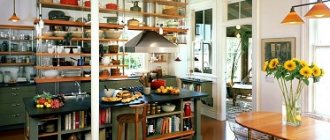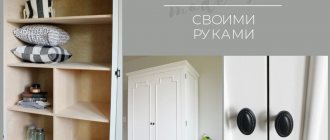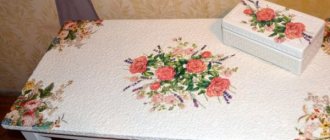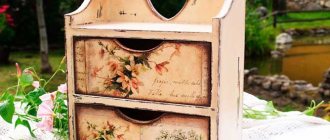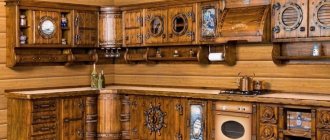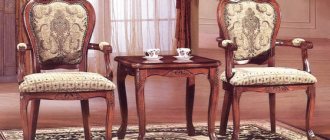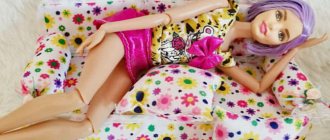Purchasing ready-made furniture can be problematic due to its high cost, and not all models are of good quality and durability. For this reason, many people prefer to make interior items for an apartment or private house on their own. Practical DIY frameless furniture is one of the simplest and most interesting solutions. It’s not difficult to make, and the result will definitely please all household members and guests with convenience. In addition, a stylish piece of furniture will become a bright accent in almost any style of the room.
Selection of materials
Frameless furniture consists of several elements - upholstery and filling. In this case, the selection of materials must be approached with great responsibility, because the service life of the future product will depend on their quality. You should especially carefully choose the fabric for the furniture cover.
Cases
When making a cover for frameless furniture with your own hands, you need to give preference to practical, non-fading and non-fading fabrics. As this part becomes dirty, it will have to be washed, so the material must withstand cleaning well and retain its shape and size when exposed to high temperatures. Most often, the following are used to make frameless furniture upholstery:
- Velours. Soft fleecy fabric that is pleasant to the touch. It is easy to process, but does not collapse under mechanical stress. Excellent for making furniture for the living room, it fits seamlessly into both classic and modern interiors.
- Flock. Suitable for creating products intended for children's rooms. Does not fade in the sun and is easy to clean without absorbing dirt.
- Chenille and jacquard. Natural fabrics with the addition of synthetic fibers that increase strength and facilitate care.
- Faux leather. Gives furniture an attractive appearance and durability.
- Tapestry. Natural fabric with weave of fibers of various compositions. As a rule, it is decorated with thematic images and attractive patterns.
- Oxford. Contains polyester fibers, withstands increased mechanical loads, and is resistant to temperature changes. Ideal for frameless furniture placed in the garden.
The use of silk, satin or calico is not allowed. Such fabric will quickly deteriorate. If you plan to create two covers - internal and external, choose cotton or synthetics for the first, and wear-resistant and practical material for the second.
Velours
Flock Jacquard
Faux Leather Tapestry Oxford
Filler
When studying master classes on the production of frameless furniture, every novice craftsman becomes familiar with the materials used as filler. Generally, polymer beads are recommended. The correct selection of their size and quantity determines how convenient the product will be during regular use.
Hard materials are not needed to make frameless furniture. The tightly sewn fabric of the cover serves as a soft frame filled with special granules from the inside. Various materials are used as content: from natural to synthetic. White polystyrene granules are more often used - an environmentally friendly, moisture-resistant material.
For oversized furniture, raw materials made from small-sized granules are better suited - the loose mass will be evenly distributed throughout the internal space of the bag, occupying two-thirds of its volume. If you plan to make a large sofa without a frame, it is better to make a choice in favor of a larger fraction. It is possible to use other fillers, such as polystyrene foam, foam rubber, down or feathers, but they are not durable. Foam pieces break down over time, and traditional soft materials clump and cause an allergic reaction.
How to make a doll closet yourself, tips for beginners
Sometimes environmentally friendly raw materials are used as filler for frameless products: cereals or peas, beans, beans. You can achieve the desired effect with their help, but the finished furniture will be too hard and not suitable for long-term rest. Legumes attract the attention of rodents and serve as breeding grounds for insects. When wet, they will begin to rot and suffer from mold. The weight will also increase significantly, which will not allow you to constantly move the furniture.
Polymer balls
What is so attractive about frameless furniture?
Firstly, this is, of course, originality. After the stumps and stones on which our not very civilized ancestors sat, after the chairs, tables, armchairs, beds of the civilized world, made of wood, metal or plastic, something radically different from both appeared. Secondly, convenience and comfort. This type of furniture takes all the curves of your body, and all your muscles relax. A great way to relax. Thirdly, safety. You cannot bump into frameless furniture and get injured. This is especially true when used in children's rooms. Fourthly, environmental friendliness. The filler is a hypoallergenic substance and does not emit harmful substances. Other materials used are also hypoallergenic. Fifthly, creativity. The flight of imagination when creating frameless furniture is limitless. You can use different materials or combinations thereof, create a variety of shapes that would be problematic to create when using traditional materials, you can use filler balls of different sizes, etc. and so on. Sixth, mobility. Frameless furniture is light - 5-6 kg, so it is not difficult to move it from place to place. When transporting, it takes up minimal space. And this is just a small part of the advantages of frameless furniture. Anyone can find many more advantages. And one more advantage of frameless furniture. Any housewife can make it. Now we will demonstrate this to you.
Tools, consumables and accessories
To assemble frameless furniture, you should use high-quality consumables and fittings. For successful production you will need:
- Reinforced threads that fasten elements together. They have increased strength, allowing them to withstand long-term use in harsh conditions.
- Tractor or spiral zipper.
- A sewing machine equipped with No. 100 needles, capable of working with thick and heavy fabric.
- Sharp tailor's scissors, with which you can easily and evenly cut any type of fabric.
- Wax chalk, necessary when transferring patterns for frameless furniture to the material.
- Expanded polystyrene.
- Buttons, rivets, Velcro, which will be used as decorative elements.
- Scotch.
The amount of fabric and fittings varies depending on what kind of furniture is being worked on. Before you start sewing, you should create a pattern and make calculations. The information obtained will help you purchase the required amount of fabric and consumables for frameless furniture.
Reinforced threads for fastening elements together
Tractor type zipper
Sewing machine Sharp tailor's scissors Wax chalk for patterns
Expanded polystyrene as a filler Decorative elements
Scotch
Kinds
Foam rubber children's furniture is divided into 2 large areas - these are rigid structures, upholstered with foam rubber and frameless chairs.
Upholstered
Upholstered chairs initially have a rigid frame made of wood, thick plywood or chipboard. Next, a layer of furniture foam rubber is glued or stuffed onto this frame, after which the entire structure is sheathed with some kind of furniture fabric.
If the structure is assembled and sheathed correctly, then such furniture will serve for decades. But at the same time, the frame chair turns out to be quite heavy and it is difficult for the baby to move or carry it. Plus, even despite the soft upholstery, a child can hit himself hard on such a chair while playing.
Frameless
As the name implies, a rigid frame is not provided in these types of chairs; more precisely, the role of the frame is played by furniture foam rubber. In fact, the craftsman only needs to cut out the foam rubber and sew a cover for the structure.
Making a soft frameless chair yourself is much easier than assembling a frame structure. The only skill required to create a frameless foam chair is the ability to cut and sew. If you have the material and a sewing machine, such a chair can be created in 2 - 3 hours.
Choosing a shape and creating a pattern
In the simplest cases, the shape of a circle or oval is chosen as the basis for frameless furniture. It does not require a complex pattern. However, there are quite a few modifications of such furnishings: pear, pouf, bag, and so on.
| Name | Peculiarities |
| Bag | It is given a round or slightly elongated shape, reminiscent of standard chairs with armrests. Suitable for installation in the living room. Can be used by both adults and children. |
| Pear | It is made in the shape of an oval without corners and additional components. Can have a wide variety of sizes. An excellent option for placement in the garden. |
| Pillow | A rectangle designed to be installed on the floor and large enough to comfortably accommodate one person. An ideal option for frameless furniture for adult relaxation. |
| Poof | Outwardly it resembles a barrel. A compact piece of furniture that does not take up much space and is convenient for daily use. |
| Ball | The product is perfectly round or close to a ball. Organically complements the interior of a children's room. |
| A drop | Shaped like a pyramid. When sitting, it supports both the back and the head. Suitable for children and adults. |
| Frameless sofa | Complex furniture made by fastening together several rectangular modules. Due to the lack of a frame, they are connected only by fabric, so the fastenings must be reinforced. The best option for a family holiday. |
If you follow the recommendations and operating procedure, the described products can be easily made independently. The most complex sofas may have a folding design, but this type of tailoring of frameless furniture is most often available only in factory conditions.
The drawing can be drawn up from scratch or a diagram taken from open sources can be adapted to the given dimensions. However, for this you need to have well-developed drawing skills, so most often ready-made calculations are used for handicrafts. Specialized companies, for a fee, develop drawings from scratch according to the customer’s specifications, which will make it possible to easily produce unique upholstered furniture for the home or garden.
How to properly arrange furniture in a room, designer tips
Bag
Pear
Pillow
Pouf Ball Drop Frameless sofa
Drawing for a large pear chair
An example of a ball chair pattern
Polyurethane foam sofas
Frameless furniture also includes products made from polyurethane foam.
Such sofas and armchairs are not too soft, but the material allows you to do without rigid support and create any shape. Sofas and armchairs made of cast polyurethane foam. Designer Gaetano Pesce, UP 2000 SERIES collection. Photo from gaetanopesce.com
If a modular sofa is not very difficult to make yourself, then sofas and armchairs made of cast polyurethane foam require factory conditions. The material is poured in liquid form into a mold, where it hardens under pressure through a chemical reaction.
Volume calculation
Normally, to assemble furniture without a frame, it is enough to fill the inner bag two-thirds full, but difficulties may arise when purchasing filler. The volume can be calculated using complex mathematical calculations, but the result obtained should also be revised taking into account the operating conditions. The polystyrene foam from which the filler is made wrinkles over time as air escapes from it. This leads to a decrease in working volume, so chairs and sofas are filled “with a reserve”.
Polymer granules are sold in 100 liter bags. When purchasing them, you should consider certain recommendations:
- If the chair is used frequently throughout the year, every 2-3 months it is necessary to additionally pour 40-50 liters of filler inside. If the furniture belongs to a person with a large build, the volume of added mass can be increased to 100 liters.
- Filler consumption is determined by the size of the furniture. Normally, one bean bag with dimensions of 120 x 90 cm requires 400 liters of polystyrene foam.
- The volume of polymer bulk mass is determined by the type of material used for external upholstery. Durable fabric reduces the load on the contents, allowing you to extend the period between refills. Shrinkage is accelerated if the bag is made of soft textiles or filled with low-quality polystyrene foam.
If you intend to regularly use the furniture, you should purchase the required volume in advance - 200-300 liters of polystyrene foam, so that you do not have to purchase it later. The choice should be made in favor of high-quality material to reduce its consumption and increase the level of comfort.
Bag of beans
Perhaps the most popular type of furniture without a frame is a beanbag or beanbag
.
The name comes from the English words bean
and
bag
, which translates as “bag of beans”. They say that designer Roger Dean got the idea to create such a chair when a farmer sat down to rest on a bag of beans.
Modern beanbags are filled, of course, not with beans, but with polystyrene balls. Because of its design, the bean bag chair is comfortable for sitting in any position: it takes on the contours of the human body.
Manufacturing stages
Before making frameless furniture, you should clearly define the procedure. Assembly technology includes:
- Design creation. The author chooses the color, model, type of fabric, decorative elements with which he will work.
- Pattern. The fabric used to make the covers is cut according to a previously prepared pattern. The inner bag and the upholstery must match each other in shape. This stage requires great precision, so you should work exclusively by hand.
- Sewing. The blanks are sewn together. A zipper is added at the bottom. The threads used must be strong, since the product is subject to serious mechanical stress.
- Filling. Filler granules are poured into the finished covers, after which the furniture assembly is considered complete.
Cutting out the parts
The material used to sew the inner cover is spread on the floor with the wrong side facing up. A pattern is applied to it, after which the optimal cutting option is calculated, allowing for effective use of the fabric. Next, drawings are made. The pattern is pinned to the material, the pattern is traced along the contour with a margin of a centimeter, after which the finished part is cut out with scissors.
It is much more convenient if two people work. In this case, one holds the stencil in place, preventing it from sliding to the side, while the other traces. With this approach the process will speed up significantly.
The elements of the outer bag and bottom are made in a similar way. You should make sure that all fragments correspond to the overall plan, otherwise problems may occur during the assembly process. At best, they will spoil the appearance of the product, at worst, they will not allow all the parts to be connected.
Steps for making a simple do-it-yourself plasterboard cabinet
Trace the pattern on the back of the fabric
Using scissors we cut out the finished parts
Sewing covers
Once the pieces are prepared, you can start sewing. The procedure will require accuracy and the ability to strictly follow the procedure. Master class on sewing a cover for frameless furniture:
- The wedges are joined together by folding them right side inward and joining along one edge. In this case, it is necessary to leave an allowance of 10 mm.
- Stitching is done on the front side of the wedges.
- A zipper is sewn into one side, the length of which should exceed 40 cm.
- There is a Velcro fastener at the top that prevents the cover from getting wrinkled during use.
- Next, the outer cover is formed. Manufacturing is carried out according to the same principle, but in this case it is necessary to use a longer zipper. The optimal size of fittings is 1 meter.
- Velcro is attached to the bag.
- The inner cover is placed inside the outer cover so that no folds form on the surface of the furniture.
Connecting the wedges
We sew with an allowance of 10 mm
We sew in a zipper We attach Velcro to the upper part so that the cover does not wrinkle We make the outer cover using the same principle Carefully place the inner cover in the outer
Filling the bag
During the assembly process, many people have problems and questions about how to properly fill the inner bag of frameless furniture. Plastic balls get clogged in one direction, form voids or fall apart in the process. Simple recommendations will help you avoid such problems:
- The inside of the case is treated with antistatic agent. Spraying the spray will prevent polymer granules from sticking to the walls.
- A two-liter plastic bottle with a narrow neck is selected.
- The bottom and neck of the homemade funnel are cut off, after which the bottle is inserted into the case with the narrow part and secured with tape.
- The second part of the plastic container is placed in a package with filler and is also tightly fixed.
- Through the created chute, plastic balls from the bag are poured into the inner furniture cover.
The method is extremely convenient and allows you not to spill a single fragment of polystyrene foam. The plastic from which the bottle is made has a slippery texture, so the balls do not stick to the surface.
Option number 1: child seat on a rigid frame
The reduced dimensions of the structure do not at all mean a lightweight assembly scheme. Children's furniture is created according to the same principles as chairs with standard dimensions, and since children are very mobile, the fastening of the units is carried out with a double margin of safety.
Materials and tools
As already mentioned, a rigid frame for a child seat can be assembled from plywood, chipboard, wood and MDF boards.
- Plywood is considered the most suitable material for such purposes; it is durable and relatively light. In theory, you can use any plywood, even thin three-layer plywood, for a child seat, but in practice it is better to take a sheet 6-8 mm thick;
For a child's chair, it is advisable to use plywood of the "FK" brand, the price for it is reasonable, plus there is complete order with environmental friendliness, as for the grade, the chair is in any case completely covered, so plywood of any grade, except 4, is suitable.
- Chipboard - the only advantage of particle boards is that they are cheap. Chipboard material is heavy, plus under constant mechanical loads it can delaminate over time;
- Natural wood is a wonderful, environmentally friendly material. Working with wood is easy and convenient, but the frame of a small chair turns out to be too massive. The recommended thickness of the board is 20 mm, the timber is taken 30x40 mm, no matter how hard you try, the frame comes out voluminous;
- MDF - fiberboards are equal in weight to chipboard, but they are denser and do not delaminate. The material costs the same as plywood, but plywood has higher strength, so MDF is rarely used for such purposes.
The density of foam rubber for a child seat does not matter much, but according to the rules, it is advisable to use material with a density of 25 kg/m³ for heavily loaded upholstery.
The frame will be assembled using wood screws; you shouldn’t take too long ones, 30-40 mm is enough. The structure is dry, with closed fasteners, so take ordinary steel screws, without anti-corrosion coating.
Tool set:
- Screwdriver;
- Wood hacksaw;
- Furniture stapler;
- Scissors;
- Roulette;
- Pencil.
Description of work
The whole complex of work is divided into 3 stages:
- Cutting out parts and assembling the chair frame using self-tapping screws;
- Cut the foam rubber and cover the frame with it;
- Cutting the furniture fabric and finishing the upholstery of the chair.
Work order
| Illustrations | Recommendations |
| Step 1. Sketch . For a small design, a hand-drawn sketch is enough, the main thing is that you understand how many parts there are in the chair and what size they are. | |
| Step 2. Cut . The chair was made from scrap materials. The load-bearing sides were made of OSB, the seat was made of chipboard, and the back was made of plywood. | |
| Step 3. Screw the bars . First, wooden blocks were screwed to the bottom of the seat, at points bordering the sides and back. | |
| Step 4. Screw the sides . The sides are cut out of OSB and are screwed to the side of the seat. Two self-tapping screws are driven into the end of the chipboard seat, and the other 2 self-tapping screws are driven into the support bars. | |
| Step 5. Assembling the back . The back consists of 3 plywood sections, they are screwed in the same way as the sides, with 4 screws each. | |
| Step 6. Fix the back . Small metal ties were used as additional fasteners, which were secured with small self-tapping screws. There were 2 ties for each joint, top and bottom. For the ties, we took a metal strip with holes; it can be easily cut with metal scissors or pliers. On the market, such tape is sold for reinforcing brickwork and other similar works. | |
| Step 7. Closing the bottom . It was also decided to close the front part under the seat; for this, a piece of OSB was cut out and screwed on with self-tapping screws. | |
| Step 8. Upholster the seat . Furniture foam rubber 40 mm thick was used for upholstery. The foam rubber was attached around the perimeter using a furniture stapler. | |
| Step 9. Upholster the verticals . A single piece of foam rubber was used to upholster the backrest, and individual squares were cut out for the armrests.
| |
| Step 10. Upholstering the seat . It was not possible to cover everything entirely, so I had to unscrew the armrests and cover the seat and back separately, and the armrests separately. No complex patterns were made; basically, the material was wrapped and fixed with a stapler. | |
| Step 11. Assembly . The seat and back were completely covered, so that the frame was not visible anywhere. The armrests were covered with a soft part and a hard panel inside. Then we screwed the armrest to the chair and wrapped the outer part, securing it with a stapler from below, from the inside. This approach made it possible to hide the screws. |
Decorating ideas
When making frameless furniture with your own hands, it is possible to use various decorating techniques. If high-quality and beautiful fabrics are used for upholstery, the piece of furniture created from them will look attractive without decoration, but there is always an opportunity to improve the result. For decoration the following are used:
- Applications. Perfect for children's frameless furniture models. May contain images of characters from popular cartoons, fairy-tale characters, and animals.
- Embroidery. It is created with your own hands from durable and bright thread and can represent inscriptions, initials of the owners and even paintings. Such decorative elements make it possible to unique not only the furniture design, but also the interior of the entire room.
- Pockets. Sewn separately, can be used as a place to store various small items. The best option for garden products.
There are many interesting ways to decorate frameless furniture. The easiest way is to use a special cape made of soft material with pile. Design possibilities are limited solely by the imagination of the future owner of a stylish and comfortable piece of home furnishings.
Conclusion
Both instructions presented above are designed for the initial level of training of a master, in other words, for an amateur. The video in this article breaks down the process clearly. If after studying the material you still have questions, write in the comments, I will try to help.
October 18, 2022
If you want to express gratitude, add a clarification or objection, or ask the author something, add a comment or say thank you!
A soft and comfortable sofa will help make any living room cozy. If you have the desire and free time, you can make such furniture at home yourself. So, how to make a sofa with your own hands?
Start by choosing a design: a simple one with a frame, a frameless transforming sofa or a roll-out sleeper. By following the instructions, even a novice craftsman can cope with the work of making any type of sofa at home.
Photo
How to make a fourth section of a sofa
Attach diagrams of the following parts to the wrong side of the remaining piece of fabric:
- 30x20 cm – 2 parts,
- 80x20 cm – 2 parts (bottom of the future pillow),
- 80x78 cm – 2 parts.
Seam allowances are 2 cm on all sides.
Connect 2 rectangles for the bottom of the pillow, sew a zipper on the fold. The edges of smaller parts (30x20 cm) can be rounded so that the transforming sofa takes on a rounded shape. Sew all elements from the wrong side. To make the foam easier to fit inside, you can cover it with lining silk, satin or any other slippery fabric.
If you want to make a soft corner sofa-transformer, add another fifth pillow.
Foam mushroom
Such figures look great in the garden, in flower beds and under trees. For ease of use, we create products separately. That is, the hood and leg are cut out as different parts, and then fastened together with a self-tapping screw or glue. Acrylic paint and long-range paint will preserve fungus well in outdoor conditions.
Article on the topic: Do-it-yourself hookah bar furniture
Polystyrene foam is completely harmless and therefore you can make children's crafts from it. Children are clearly interested in playing with handmade toys.
You can initially wish yourself a birthday. Simply assemble the letters from foam and paint them different colors.
Buy or sew?
He immediately liked this factory-made home furnishings accessory. And the reason for purchasing it is important: a growing baby, not yet learning to walk, climbs on everything standing in the apartment. But this chair, like another chair made of chipboard or fibreboard, will not fall onto the floor. It will simply roll off the bag like a ball. But the price is not yet affordable.
“What if you sew such a bag yourself from some kind of synthetic material that looks like leather and is just as elastic?” - a novice dad will think, but he knows how to do almost everything for everyday life with his own hands.
And in a couple of months, just in time for his son’s first anniversary, he will present a gift for him - a hand-sewn bean bag chair filled with balloons. And there will be original frameless furniture for children's pleasure.
In addition, some factory-made models of high-tech furniture do not please buyers with at least average workmanship and are often sold for a short period of time. If the folds of such a bag remain sharp, say, for six months, then a crack will form at this place.
And now the former original frameless furniture, the beanbag chair, will quickly lose quality, and if you cannot seal the crack with an invisible plaster, it will add an assortment of discarded household products at the quarterly solid waste collection sites. That is, in landfills.
Many people who go to such selling companies, like this young man, before buying something from the modern assortment, scroll through their minds the same question shown above. Therefore, below are our tips on what you can use to make frameless furniture on your own.
She will make the whole family happy. This chair is super ergonomic, you can adjust it to suit you in a few seconds, changing only the position in it while watching football matches on TV or movies, or playing chess. And it’s even comfortable to take a nap in it. It follows the contours of the human body, which is why they are classified as orthopedic furniture.
Such a furnishing accessory can be made quickly and with decent quality, and can easily fit into the interior, varying its location. Budget expenses will not empty your wallet, and there will be a lot of pleasure in the family.
Stucco for walls
Imitation of gypsum stucco is made from large- and fine-grained sheets of foam plastic. Most often, such details are made white, unpainted or imitating various materials - wood, stone, etc. Stucco moldings made of polystyrene foam decorate the interiors of the following styles:
- Art Deco;
- classical;
- rococo;
- baroque;
- Empire;
- Renaissance;
- Greek;
- modern;
- romantic;
- modern.
The following decorative elements are produced to decorate polystyrene walls:
- plinth – covers the junction of the walls and the floor, plinths are produced in various thicknesses, can hide wires;
- cornice - covers the angle formed between the ceiling and the wall, comes in different widths and degrees of decorativeness;
- socket – frames the place where the lamp is attached;
- molding - a wide strip decorated with a three-dimensional pattern, used as a frame;
- bas-relief – a three-dimensional detail protruding above the plane, a full-fledged composition;
- bracket - attached to protruding parts as a supporting part, decorated with curls;
- corner parts - they are used to decorate the corners of the walls;
- column – a three-dimensional part, mounted vertically on the wall;
- semi-column - less convex than a column, usually rounded;
- capital - the upper part of a column, half-column;
- niche - attached to the wall, various objects are installed on it;
- fireplace element - frame for decorative or electric fireplace;
- sandrik – facade cornice above a window, rarely used indoors;
- framing elements of doors, windows, arches - have different sizes and shapes;
- architrave - may have a complex pattern, but more often it is a narrow part under which the wiring is hidden;
- panels - have the form of tiles with convex patterns of various sizes; the “brick” design is popular.
Article on the topic: Do-it-yourself plasticine furniture
Elements for exterior decoration are reinforced with acrylic fiberglass mesh, onto which a special coating is applied, resulting in a completely realistic imitation of real plaster.
It is advisable to use foam stucco molding where it cannot be damaged by people or pets, since rough impact leaves dents on it, which greatly spoil the appearance.
How to make a sofa bed
A frameless transformable sofa, consisting of pillow modules, is very convenient for the home. You can sit on it with your family in front of the TV, lie down alone and read the newspaper, or have a get-together with guests. However, if there is a need to have a double bed in the house, it is better to immediately make a good pull-out sofa book. Moreover, making a simple sleeping sofa with your own hands is not much more difficult. Where to start?
Prepare tools and materials:
- boards 1900×200 mm (2 pcs.), 800×200 mm (2 pcs.), 800×50 mm (2 pcs.), 1000×50 mm (12 pcs.);
- beam;
- legs made of wood or metal;
- foam rubber (or spring blocks);
- dense upholstery fabric (if the sofa is for children, then in the appropriate color);
- transformation mechanism for a sofa-book;
- frame covering material;
- screwdriver,
- jigsaw;
- hacksaw for cutting metal;
- roulette;
- construction stapler.
How much can you earn?
In terms of earnings, everything will depend on how many orders you can get. The net profit in your case from one unit is about 700-1200 rubles (we take the cheapest version of the pear chair 2000-3000 rubles). This refers to the costs of sewing, transport or gasoline (since you will have to travel a lot), materials, advertising, taxes.
To begin with, you will have to set prices quite modest, since you will need to work on your credibility and positive reviews.
Also, over time, if you can buy fabric and filling in bulk, this will allow you to save a lot.
But for starters, we have what we have, and accordingly, on average, 1000 rubles per chair sold. Accordingly, when selling 30 chairs per month, you get a net profit of 30,000 rubles. But this, as you understand, is the very beginning...
Foam pillows
Sofas made of foam rubber without a frame can be made from large pillows. This will be quality furniture. The stages of product creation are as follows:
- Make 4 foam pillows with dimensions: 225 x 225 x 1600, 225 x 800 x 1600, 225 x 575 x 1600, 225 x 500 x 1600 mm.
- Cover each pillow tightly with lining material.
- For each pillow, sew covers from your favorite furniture fabric. Make zippers on the end sides along the entire length of the product so that they extend to the sides, otherwise it will be difficult to insert a foam cushion. When sewing the covers, also attach the connecting flaps. Cut out the parts so that there is an additional 1-1.5 cm left on all sides where the seams will be.
Armrests can be omitted or built later - it depends on the wishes of the owners. The sofa will fold out to create a large rectangular bed, which is also very convenient.

